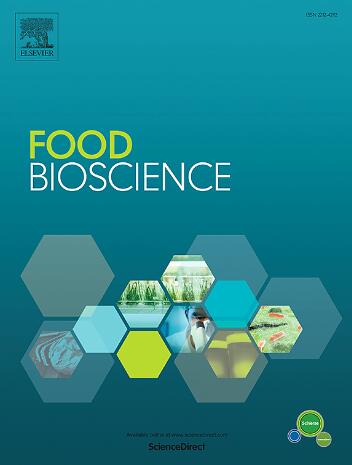Polydopamine nanocomposite-based aptasensor for rapid detection and effective killing of Staphylococcus aureus
IF 4.8
1区 农林科学
Q1 FOOD SCIENCE & TECHNOLOGY
引用次数: 0
Abstract
Achieving accurate detection and early sterilization of Staphylococcus aureus (S. aureus) is one of the most important methods to prevent further contamination and spread of pathogenic bacteria. In this study, an aptasensor based on PDA/AuPt nanocomposites was prepared for specific binding, colorimetric detection, and photothermal inactivation of S. aureus. The aptamer (Apt) was immobilized on PDA/AuPt by gold-sulfur bonding (Au-S). Utilized the excellent peroxidase mimetic activity of PDA/AuPt as a colorimetric signal probe. The detection range in colorimetric mode was 1.4 × 102-1.4 × 107 CFU/mL and the detection limit (LOD) was 44 CFU/mL. The comprehensive inspection procedure can be fully completed within a 45-min timeframe. Meanwhile, the aptasensor was successfully applied to the detection of S. aureus in real samples with the recoveries of 99.4%–110.8%. In addition, PDA/AuPt had a photothermal conversion efficiency of 22.2%, which made it an excellent photothermal agent. After incubation of 150 μg/mL apt-PDA/AuPt with S.aureus, the solution temperature rapidly increased to 62.9 °C after 5 min of near-infrared irradiation. The bacteria were killed by high temperature, and the inactivation rate was 95%.The results confirmed the application of PDA/AuPt for detecting and killing bacteria, contributing to the establishment of a food safety control system and protecting human health.

求助全文
约1分钟内获得全文
求助全文
来源期刊

Food Bioscience
Biochemistry, Genetics and Molecular Biology-Biochemistry
CiteScore
6.40
自引率
5.80%
发文量
671
审稿时长
27 days
期刊介绍:
Food Bioscience is a peer-reviewed journal that aims to provide a forum for recent developments in the field of bio-related food research. The journal focuses on both fundamental and applied research worldwide, with special attention to ethnic and cultural aspects of food bioresearch.
 求助内容:
求助内容: 应助结果提醒方式:
应助结果提醒方式:


